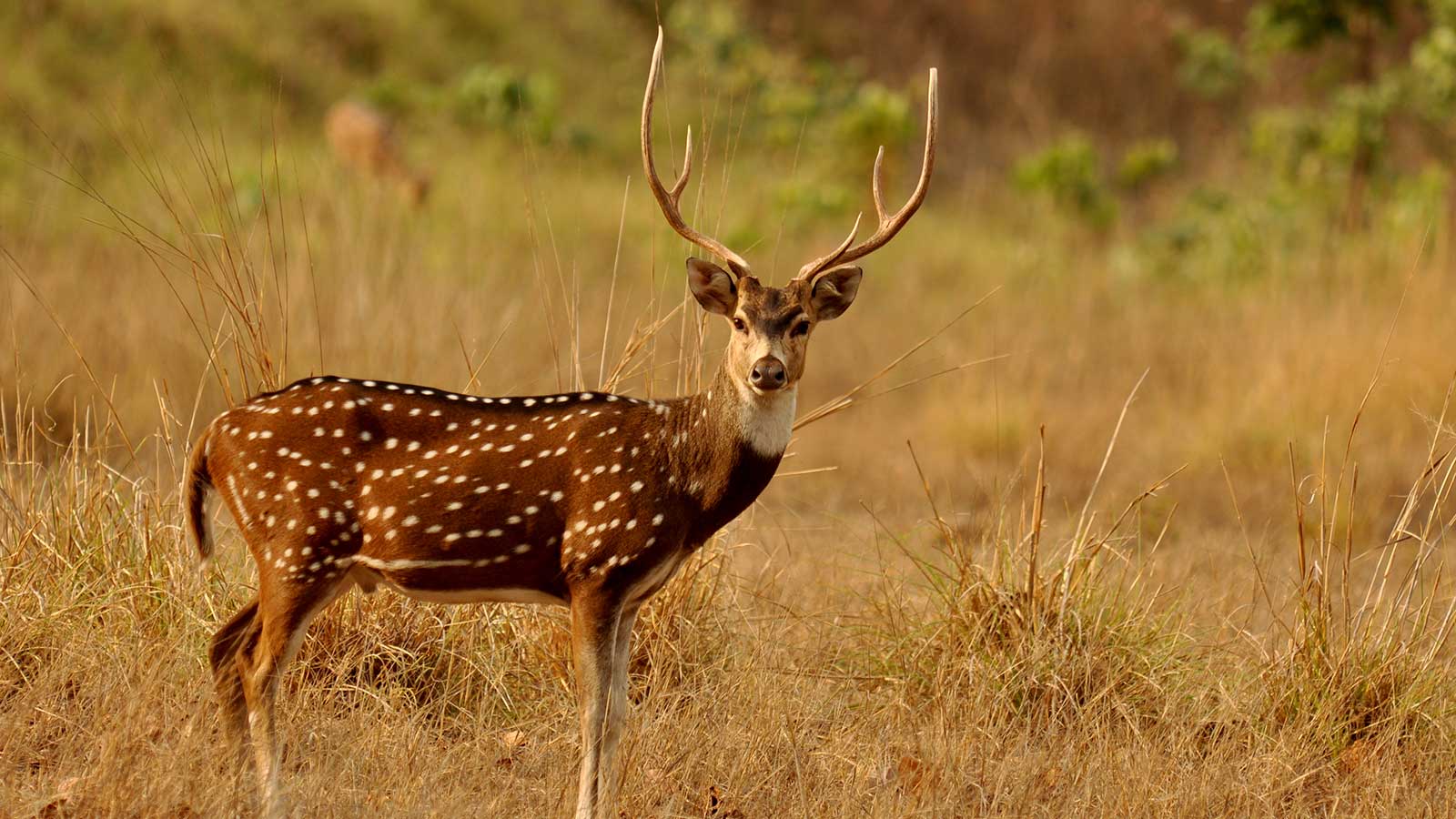
Not only favored with the snow-capped Himalayan range; Nepal is also blessed with diverse topography comprising of sharp altitudinal and climatic variation. Therefore, it is a haven for heterogeneous species of flora and fauna.
The country is a homeland to 175 species of herpetofauna, 5,400 species of higher plants, 645 species of butterfly, 180 species of dragonfly, 186 species of fish, 858 species of birds, and 185 species of mammals.
These statistics on a global frame of reference indicate a contribution of 1.4% herpetofauna, 2.2% flowering plants, 4.2% butterfly, 2.2% fish, 8.2% birds, and 4.2% mammals to the biodiversity currently present in the entire planet.
To sustain and protect these immense and varied biodiversities within the vicinity of the country; National Parks, Conservation Areas, and Wildlife Reserves were brought into existence via the National Park and Wildlife conservation act of 1973 [2].
With the establishment of the Chitwan National Park, Nepal’s first national park in 1973; 12 National parks have been established around the country. In today’s blog, we are going to explore them thoroughly.
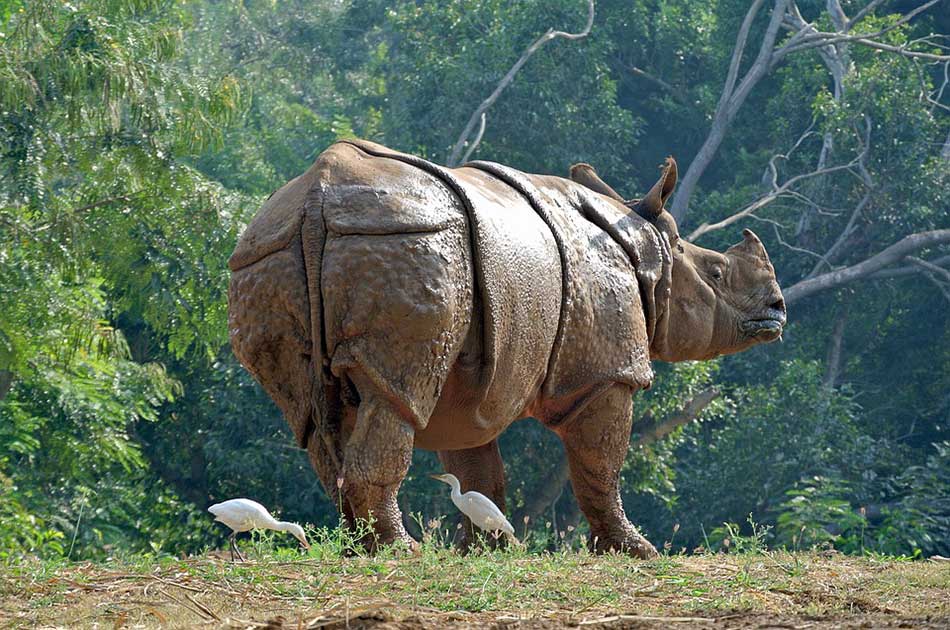
Established in 1973, the Chitwan National Park is celebrated as Nepal’s first National Park with a total area of 932 sq. km. It covers Chitwan, Makawanpur, Parsa, and Nawalparasi districts in south-central Nepal and highlights the subtropical lowlands of the inner Terai.
The park consists of elevations ranging from 110m to 850m asl., and shares its border with Parsa National Park to the east, Madi settlements and Nepal-India border to the south, and Rapti and Narayani River to the north.
Being the eldest national park, it has acquired extensive experience with a long history in park management and nature conservation. The park harbors a variety of flora and fauna. Around 70% of the park’s vegetation consists of Sal (Shorea robusta) forest while Pine, riverine forest of Sisau and Simal with grassland covering rest of the area.
The park harbors 56 species of herpetofauna such as One-Horned Rhino, Royal Bengal Tiger, Spotted Leopard, Black bears, Himalayan Black Bear, Wild Elephant, Spotted Deer, Hog Deer, Barking Deer (smallest deer in Nepal), Samber Deer, Wild Water Buffalo, Swamp Deer, Gharial Crocodile, and Wild Boar.
Alongside, 126 species of fish, and 68 species of mammals including world’s largest and smallest terrestrial mammal wild elephant and pygmy shrew respectively.
Considered as a bird watcher’s paradise, the park consists of 544 species of birds with 22 globally threatened species.
In recognition of its distinct biological resources of remarkable value globally, UNESCO designated CNP as a World Heritage Site in 1984. The park also contains 750 Sq. km. of forest and private land as the buffer zone with a Ramsar Site – Beeshazari Lakes.
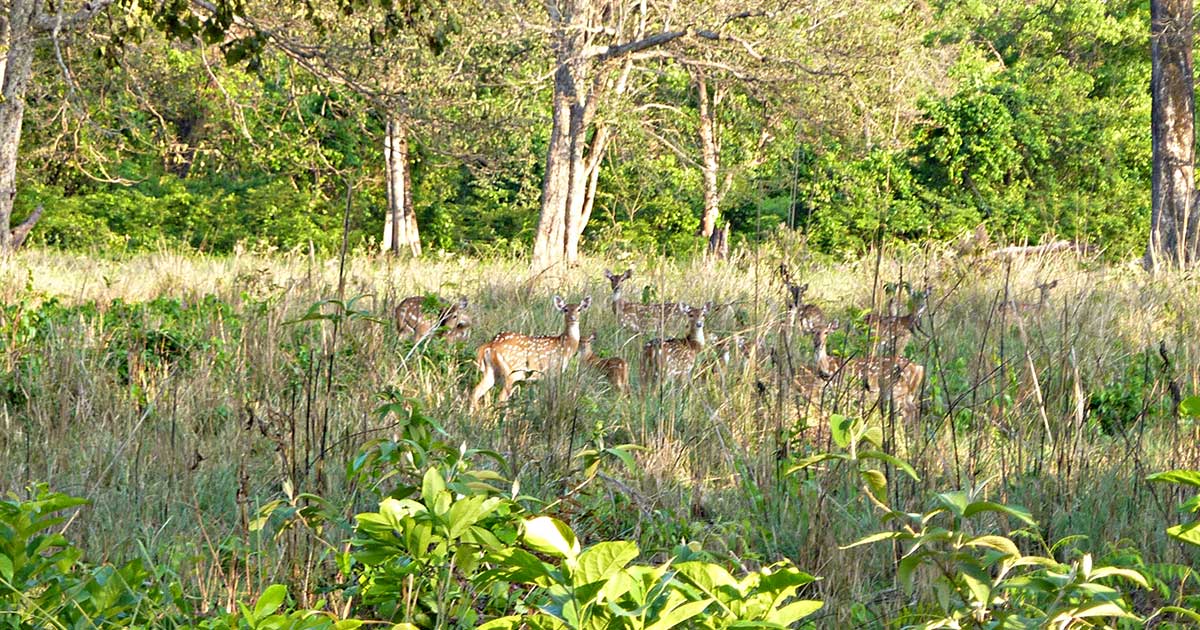
The largest, untouched and peaceful wilderness area in the Terai region of Nepal; Bardia National Park was officially established in 1982 A.D. as Royal Bardia National Reserve that was converted into a fully-fledged National Park in 1988 A.D. to protect the diversity of decreasing species, especially the tiger and its natural prey species.
It covers an area of 968 sq. km along the eastern bank of the Karnali River in the Bardiya District between the elevation ranging from 80 to 150m asl.
The national park has its boundary demarcated by the ridge of Siwalik Hills at the north, Nepalgunj-Surkhet highway at the south, Geruwa (a branch of Karnali river) in the west, and Babai river in the Southeast The southern border possesses a serious threat to the protected area.
Nearly 70% of the area in the park is enclosed in the forest of Sal trees with a blend of grassland, savannah, and riverine forest.
The park comprises 839 species of flora and provides shelter to Wild elephants, Royal Bengal Tiger, Spotted deer, Blackbuck, Swamp Deer, Blue Bull, Wild Boar, Pangolin, and One-horned Rhino with other endangered species include Gharial Crocodile, Marsh Mugger, and Gangetic Dolphin.
The park harbors more than 30 different mammals, 407 species of birds (Bengal florican, white-rumped vulture, peafowl, and bar-headed geese are the distinctive species in the park), and several species of snakes, lizard, and fish.
Banke National Park and Bardia National Park jointly form a coherent protected area of 1,437 Sq. km. that constitutes Tiger Conservation Unit (TCU) extending over 2,231 Sq. km. of alluvial grasslands and subtropical moist deciduous forests.
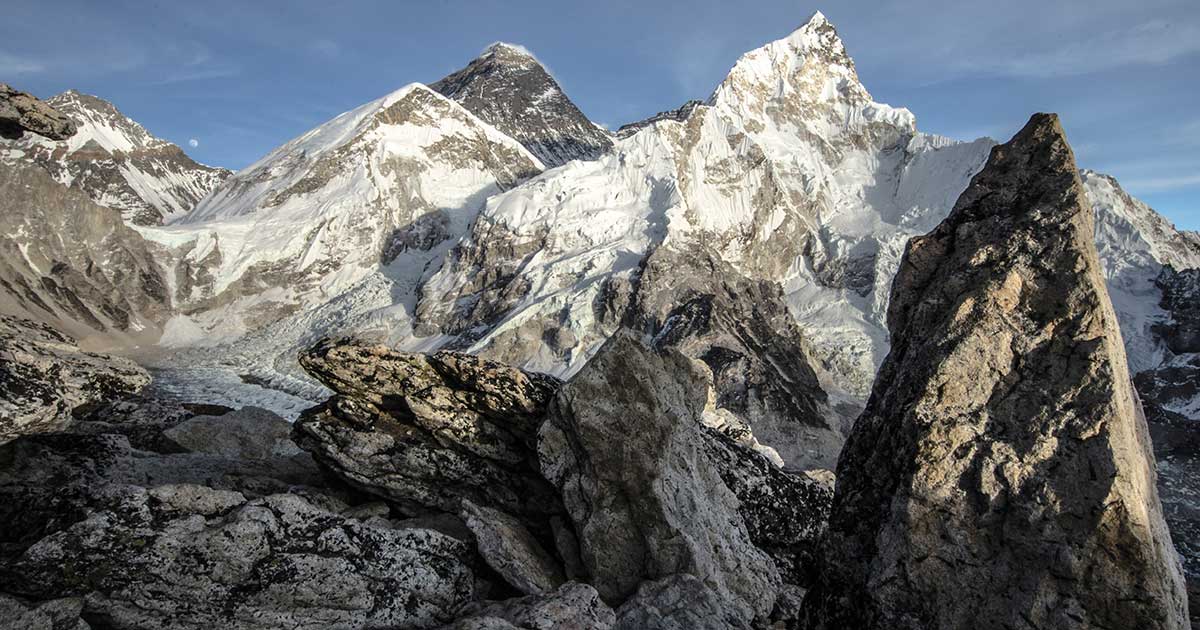
Sagarmatha National Park was established on 19 July 1976 after the official declaration of its creation in 1973 A.D. at WWF's 3rd International Congress in Bonn, Germany. It covers an area of 1148 sq. km. in the Solukhumbu district of Nepal.
The park is situated lies in the upper catchment of the Dudh Kosi river with a buffer zone of 275 Sq. km. declared in 2002 A.D. and shares its border with Makalu Barun National Park at the east, Qomolangma National Nature Preserve to the north, Sagarmatha National Park Buffer Zone to the south, and Rolwaling valley of Gaurishankar Conservation Area to the west.
The park is encircled by 25 or more peaks over 6,000m, and seven - Baruntse, Lhotse, Nuptse, Pumo Ri, Guachung Kang, Cho-Oyu, and Nangpai Gosum - over 7,000m high with the world’s highest peak Mt. Everest at the heart. The park consists of numerous glaciers such as Nangpa, Imja, Khumbu, Ngozumpa, etc.
These all extend awe-inspiring vistas to the observers. The Park is important for key high altitudes breeding species such as blood pheasant, Snow leopard, Red Panda, Musk deer, Himalayan Thar, Wild Yak, Grey Wolf, Golden Jackel, Himalayan Pika, and many more.
Also, the park renders haven to a total of six amphibians, seven reptiles, and 200 species of birds including 19 species of water birds. Also, 30 butterfly species have been seen, among them the Orange and Silver Mountain Hopper, which is not recorded elsewhere in Nepal, and the rare Red Apollo.
Moreover, the region flaunts distinct Sherpa culture and tradition along with their legendary hospitality.
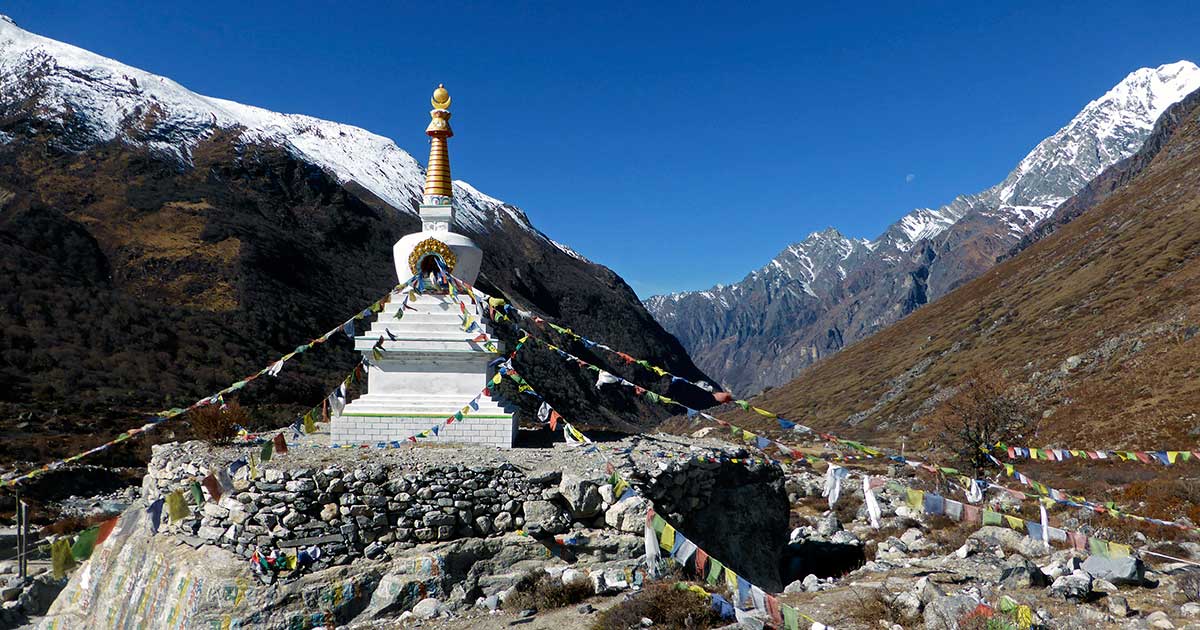
Exceptionally rich in a picturesque landscape, Langtang National Park was designated as the first Himalayan National park in 1970-1971 A.D. Gazetted in 1976; the park was established to conserve the central Himalayan ecosystem.
The 2nd nearest national park to Kathmandu, the park has an area of 1,710 sq. km that extends over parts of Nuwakot, Rasuwa, and Sindhupalchowk Districts; bordering with Bhotekoshi and the Trisuli Rivers to the west, Nepal-China border to the north and the northeast.
Additionally, the ridge of Gosaikunda and Lekh- Dorjelakpha divides the park into eastern and western sectors. Constituted on 27 April 1998, the buffer zone of Langtang National Park with an area of 418.3 sq. km includes the settlements inside the park and a mutual impact zone outside the park.
With the elevations ranging from 1,500 m to 7,234m asl, the park is homeland to vegetations such as Sal, Pine, various species of Rhododendron and Nepalese alder in hill forests (2,000-2,600m); oak vegetation at temperate zone (2,600-3,000m).
Similarly, silver fir, hemlock, and larch at sub-alpine zone (3,000–3,600m); and above 4,000m elevations, Juniper and Rhododendron shrubs (R. anthopogon) slowly fades and the expansive alpine grassland meadows appear.
Furthermore, the park harbors key species such as Red Panda, Brown Bear, Himalayan Black Bear, Musk deer, Jharal, Barking deer, Monkey (common languor), Ghoral, and Serow in coexistence with more than 250 species of birds.
On top of that, Langtang National Park is the only protected area in Nepal that provides a breeding ground for Dark-rumped Rose Finch (Carpodacus edwardsii) during summer.
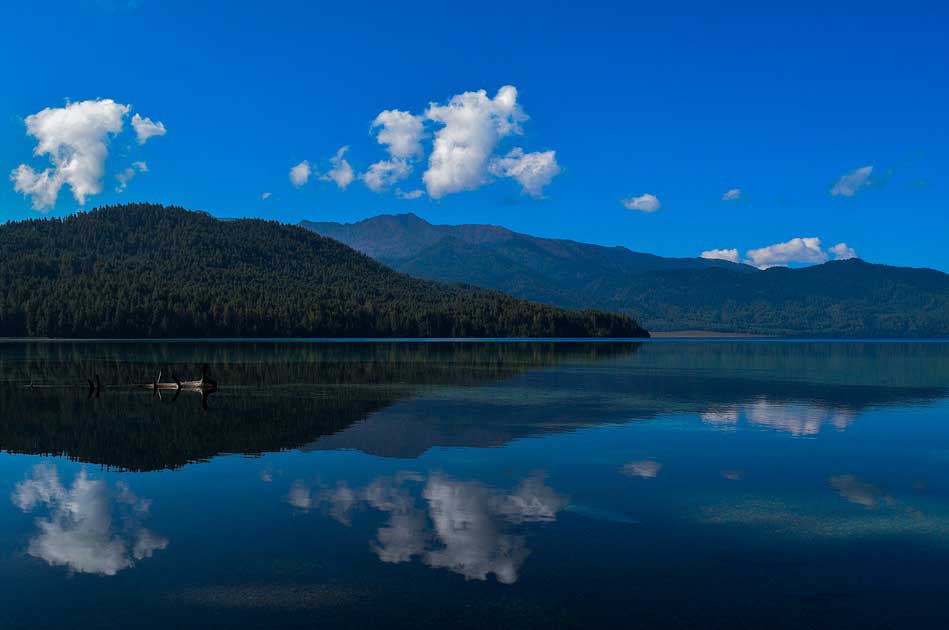
Surrounded by alpine coniferous vegetation like thick Pine and Juniper, Rara National Park was established in 1976 A.D. and highlights the widely celebrated glittering lake of Rara (2,990m) surrounded by the lush green hills.
Moreover, the park features paddle boating in the clear waters of Rara Lake (the largest lake in Nepal), hike to nearby hills seeking outlooks of the mountains and lake at proximity, interacting with heart-warming local people, or just amble around the lake observing vivid flora and fauna along the way.
Being the smallest national park, it covers a total area of 106 sq. km. in the north-western Mugu district of Nepal (90% in Mugu and 10% in Jumla districts to be precise) at an altitude ranging from 1,500 to 5,000m asl.
With the numerous flora and fauna in its possession; the national park flaunts more than 500 different kinds of flowers, 20 different species of mammals, and 214 species of birds alongside the snow trout, a species of freshwater fish that is found in the Rara Lake.
The park renders haven to key species of fauna such as Musk deer, Snow leopard, Red panda, Grey Wolf, Leopard Cat, Common Langoor, Jackal, Himalayan tahr, Yellow-throated martin, Wild dog, Wild boar, Rhesus macaque, and Common otter.
Also, 350 species of birds like Coots, Great-crested Grebe, Black-necked grebe, Red-crested pochard, Mallard, Common teal, Merganser, and Gulls. Occasionally, Migrant waterfowls and gallinaceous can be seen here.

Established in 1984 A.D., Shey-Phoksundo National Park is located in Dolpa district of Nepal and covers a total area of 3,555 sq. km. which makes it the largest and sole trans-Himalayan national park in Nepal.
Situated in elevations ranging from 1,500 to 6,000m asl; Shey-Phoksundo National Park presents a remarkable wilderness of Himalayan and trans-Himalayan habitats. The national park is a stronghold for numerous globally endangered mammals including the magnificent snow leopard (Panthera uncia).
Additionally, the park highlights alluring Phoksundo Lake (3,612m) with a depth of 145m, which was declared a Ramsar site in 2002 A.D.Close by the lake’s outlet lies, the country’s highest waterfall.
The park harbors flora like Himalayan fir, Himalayan white birch, Juniper, Rhododendron, Pine, Cedar, Blue pine, Hemlock, etc. and fauna such as Tibetan antelope, Musk deer, Wild Yak, Grey wolf, Blue sheep; alongside, more than 200 spices of birds like Wood snipe, White-throated tit, Wood accentor, Crimson-eared rosefinch, etc.
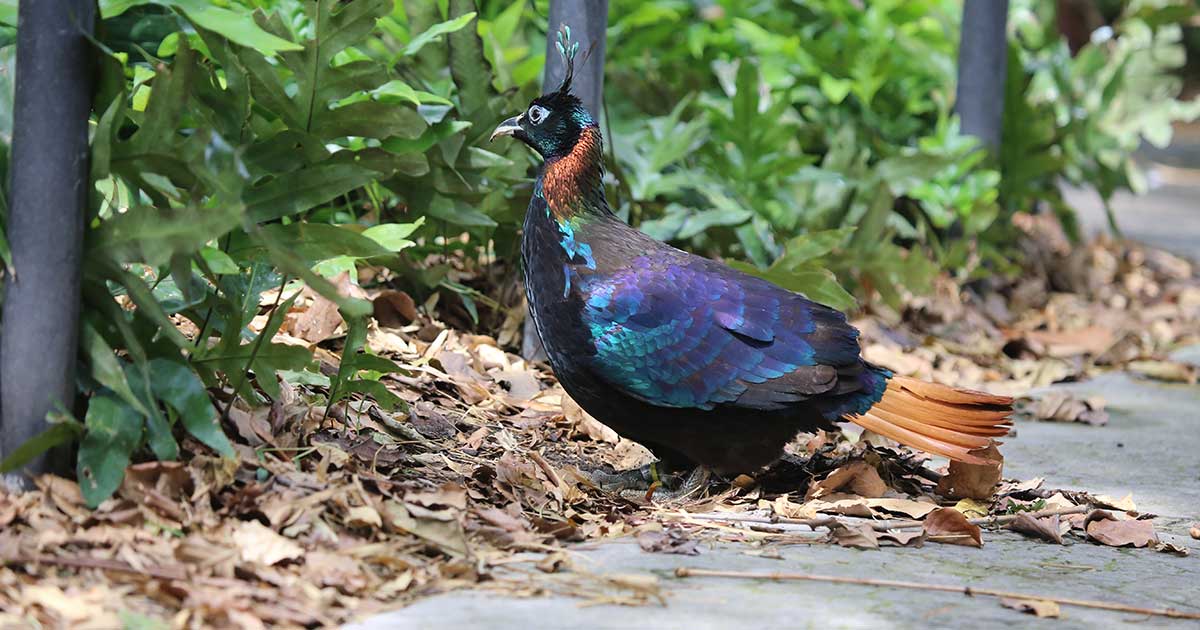
Stretching over the Baglung, Bajura, Doti, and Acham districts of Nepal; the Khaptad National Park was established in 1984 A.D. and covers an area of 225 sq. km.
The park is situated in the elevation in-between 1,500 to 5,000m asl and possesses 224 species of medicinal herbs; praised by compliments such as the “living garden of herbs”, “a museum of natural history”, it is estimated that the park harbors about 567 species i.e. 11% of total flowering plants in Nepal.
Additionally, the park consists of a subtropical forest of Chir pine at lower altitudes, and subalpine forests composed of fir, hemlock, oak, and rhododendron vegetations in the higher regions.
The park is occupied by faunas like Musk deer, Red Panda, Grey Wolf, Leopard Cat, Barking deer, Wild dog, Wild boar, Ghoral, Himalayan black bear, Yellow-throated marten, Rhesus monkey, and Langur monkey.
On top of that, the park is home to 270 species of birds; frequently observed species are Impheyan pheasant, Partridges, Flycatchers, Bulbuls, Cuckoos, and Eagles.
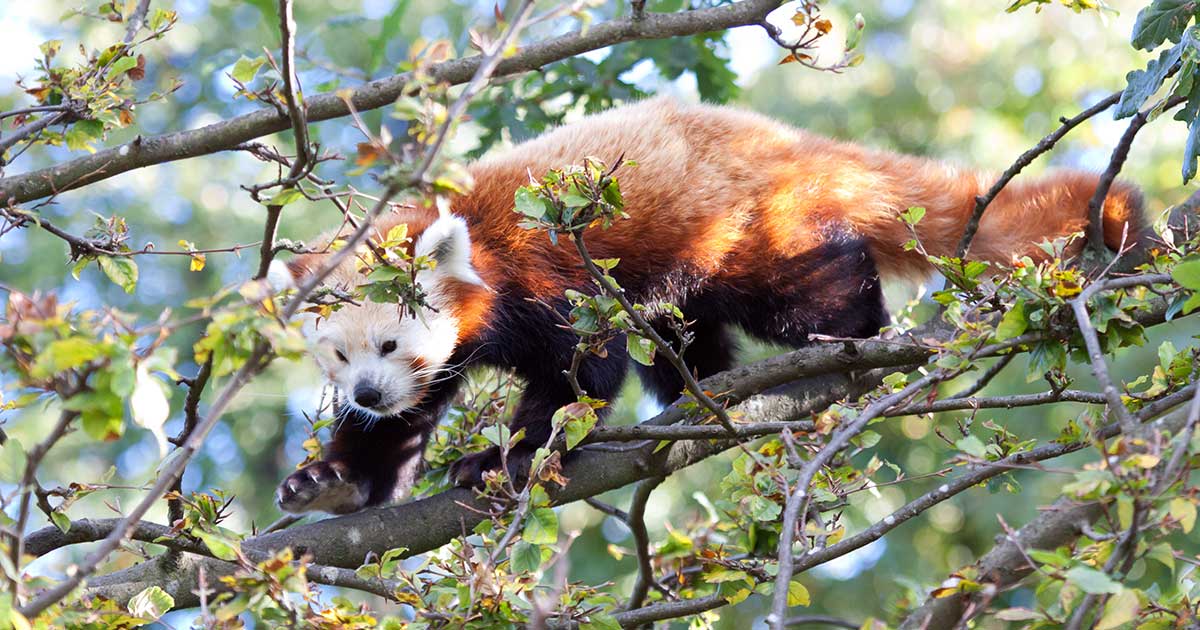
Situated in the eastern Himalayas Makalu Barun National Park was established in 1992 A.D. with an area of 1,500 sq. km. That was extended in 1997 A.D. by a Buffer Zone (previously Conservation Area) of 830 Sq. km. that consists of significant human settlements.
The park is positioned in the altitudes ranging from 1,500 to 5,000m and exhibits a high diversity of vegetation i.e. tropical Sal forest below 1,000 m altitude; subtropical chinkapin forests at 1,000-2,000 m; temperate broadleaf forests at 2,000-3,000m; subalpine conifer forest with stands of Himalayan birch and Rhododendron at 3,000-4,000m.
In addition, the park majorly exhibits its key wildlife such as Clouded Leopard, Snow Leopard, Red Panda, Musk deer, and Pangolin close to the side of more than 250 species of birds.
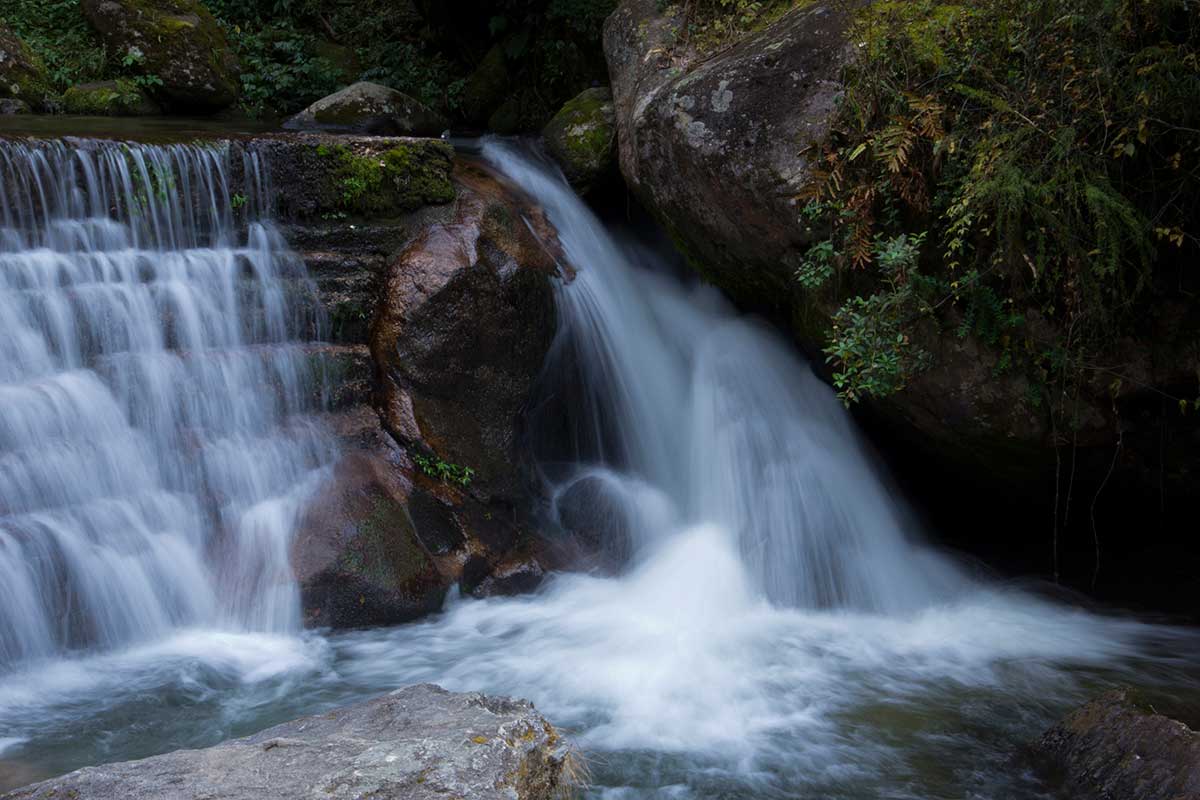
With two islands of forests namely Shivapuri and Nagarjun; Shivapuri Nagarjun National Park is situated at the north side of Kathmandu valley with a total area of 159 sq. km. Established in 2002 A.D., the national park covers part of Kathmandu, Nuwakot, Dhading, and Sindhupalchowk districts of Nepal and lies within the elevation range of 1,350m to 2,732m asl.
The park area is surrounded by a heavy sub-urban population, demarcated by stone and brick walls. Positioned in the sub-tropical and lower temperate zone of Nepal, the park harbors 1,250 species of vascular plants and 129 species of mushrooms where Schima-Castanopsis, Pine, and Oak-Rhododendron are the chief vegetation.
The protected wildlife in the park comprises of animals such as Red Panda, Leopard Cat, Clouded Leopard, Assamese monkey, and pangolin whereas common leopard, Wild Boar, Barking Deer, Common Langoor, Yellow-throated marten, Giant flying squirrel, Flying foxes, Himalayan Ghoral, Himalayan Black Bear, etc. are residing fauna.
Shivapuri Nagarjun National Park is also the homeland of 311 species of birds including 117 migratory birds alongside 102 species of moths and butterflies. Common species of bird species are the White-backed vulture, Himalayan griffon, black vulture, beard vulture, etc.
Furthermore, spiny babbler and wren babbler are the endemic birds found here. On top of that, King cobra, green pit viper, rat snake, skink, lizards, geckos are common reptiles; Frogs and toads are common amphibians are inhabiting the park.
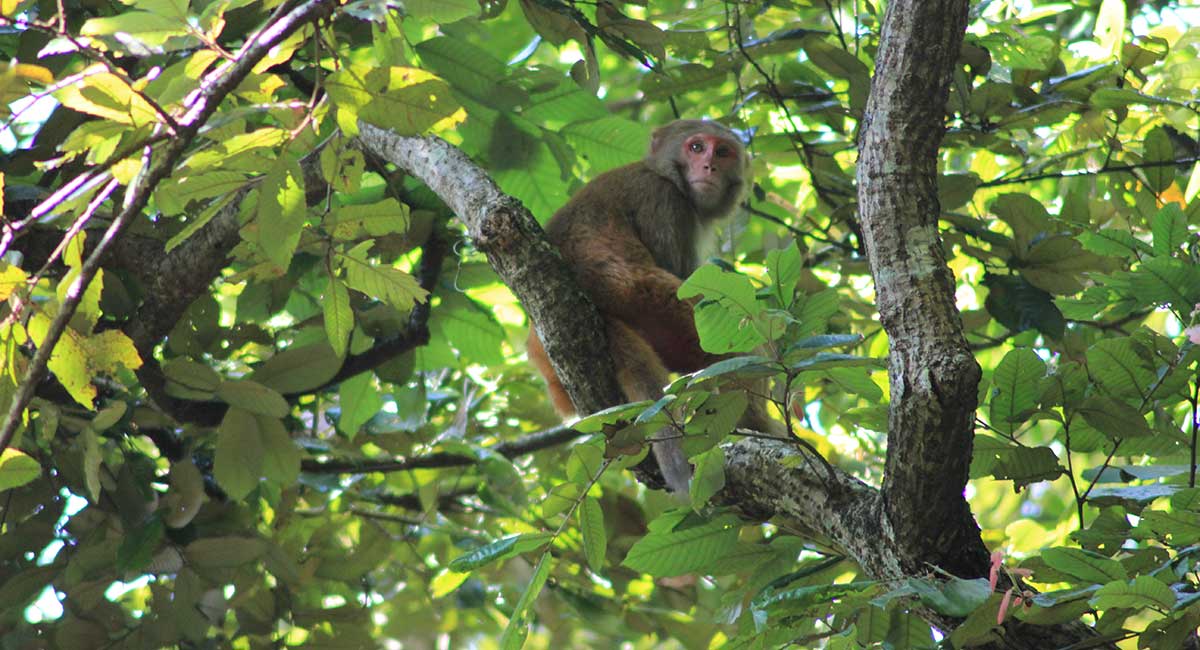
With the major intention of conserving the wild tigers, an endangered wildlife species; Banke National Park was established on 12 July 2010. It covers a total area of 550 sq. km. in Banke district with its buffer zone of 343 Sq. km. that incorporates parts of Banke, Dang, and Salyan districts.
The park is positioned within an altitude ranging from 50 to 150m asl besides sharing its boundary with the Kamdi corridor at the south and Bardia National Park to the west. Banke National Park is an essential constituent of Terai Arc Landscape (TAL) which renders additional habitat for wild tigers.
The major area of the park is covered with forest i.e. chiefly composed of Sal, Karma, Khair, and Sissoo where 124 plants, 34 mammals, more than 300 birds, 24 reptiles, 7 amphibians, and 58 fish species live in.
The national park protects and conserves three species of mammals (Tiger, Striped hyaena, Four-horned antelope), four species of birds (Giant hornbill, Black stork, Bengal florican, and Lesser florican), and two species of reptiles (Gharial crocodile and Python) residing in the park that are in danger of becoming extinct.
Rapti River at the south and Babai River at the north render the vital freshwater essential to sustain life in the Park.
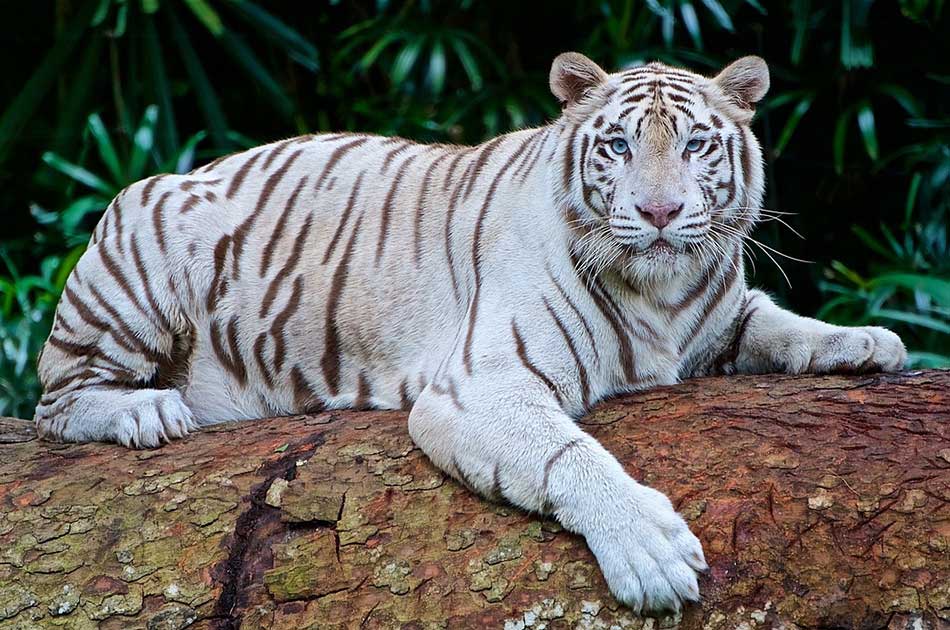
At the beginning of 1969 A.D., Shuklaphanta National Park was managed as a hunting reserve. Then, it has been gazetted as a Wildlife Reserve in 1976 A.D. and in 2017 A.D. it got its current National Park status, covering an area of 305 sq. km.
The youngest national park of Nepal is located at the far south-western terai of Kanchanpur District in Nepal at the elevations of 50 to 150m asl; while sharing a common border with India in the south, Mahakali River in the west, Chaudhar River in the east and a forest belt and cultivations in the north.
Despite the fact that Shuklaphanta National Park covers a small area i.e. predominantly occupied by Sal forest, Sal savanna; it provides a haven to the diversity of wildlife species at a single spot including 24 mammal species, 350 species of birds of which 180 are breeding species, 14 species of fish, and 10 species of ectoparasites and biting flies.
On top of that, the national park flaunts its largest population of Bengal Florican (Houbaropsis bengalensis). Fauna such as Pangolin, One-horned rhino, Leopard cat, Wild elephant, Royal Bengal Tiger, Swamp deer, Black Buck, etc. resides within the vicinity of the protected area.
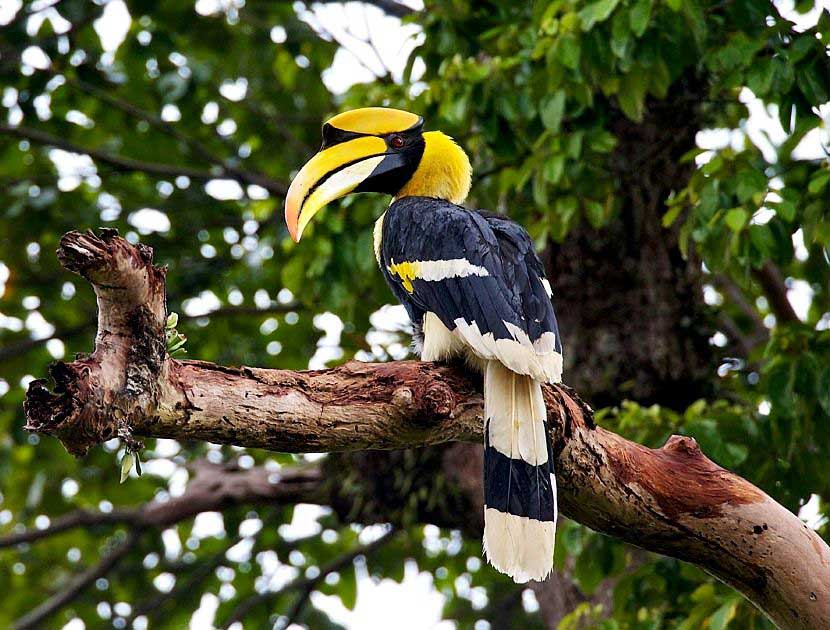
In 1984, Parsa National Park was gazetted as a wildlife reserve in order to conserve the habitat for wild Asian elephants and a variety of other fauna. Gazetted as National Park in 2017, Parsa National park is situated in the south-central lowland Terai of Nepal with an area covering 637.37 Sq.km. of a pristine sub-tropical jungle.
In the forest chiefly made up of tropical and subtropical species, 90% is composed of Sal (Shorea robusta). Within the vicinity of the park, riverine forests can be found along the banks of the rivers with thriving Khair and Silk cotton tree, whereas, Sal and Pine forests in the north-eastern regions with higher altitudes.
The protected area provides shelter to diverse wildlife including Pangolin, Four Horned Asian Elephant, Royal Bengal Tiger, Bison, One-horned rhino, Sloth Bear, and Leopard. Also, Langur, Rhesus macaques, striped hyena, Jungle cat, Palm cive, Blue bull, Sambar, Chital, Hog deer, and Barding deer occupy the area of the national park.
Parsa National park is the homeland of more than 500 species of birds where White-breasted kingfisher, Paradise flycatcher, Large racquet-tailed drongo, Golden-backed woodpecker are commonly sighted species.
Furthermore, the Giant hornbill: one of the endangered bird species are protected by the park. Renowned for reptiles; Common Cobra, Common, and banded Karit, Python, and King cobra are the snakes' species in the park.
References:
|
[1]"DNPWC", Department of National Parks and Wildlife Conservation. [Online]. Available: http://www.dnpwc.gov.np/. [Accessed: 22- Jun- 2018]. |
[7]N. Nepal, "Rara", [Online]. Available: https://www.welcomenepal.com/places-to-see/rara.html. [Accessed: 23- Jun- 2018]. |
|
[2]P. Mishra, "The Langtang National Park: A Purposed First Biosphere Reserve of Nepal", Journal of the National Science Foundation of Sri Lanka, vol. 32, no. 1 & 2, pp. 333-335, 2003. |
[8]A. Prime and B. 0ksnebjerg, "FIELD STUDY IN SHEY-PHOKSUNDO NATIONAL PARK", World Wide Fund for Nature (WWF), Kathmandu. |
|
[3]"Chitwan National Park", [Online]. Available: http://www.chitwannationalpark.gov.np/. [Accessed: 22- Jun- 2018]. |
[9]N. Nepal, "Khaptad National Park Nepal", [Online]. Available: https://www.welcomenepal.com/places-to-see/khaptad.html. [Accessed: 23- Jun- 2018]. |
|
[4]"Bardia National Park", [Online]. Available: http://www.bardianationalpark.gov.np/. [Accessed: 22- Jun- 2018]. |
[10]Ghimirey, Yadav & Ghimire, Binod & Pal, Prabhat & Koirala, Vicky & Acharya, Raju & Vinod Dahal, Badri & Appel, Angelika. (2012). Status of Felids in Makalu-Barun National Park, Nepal. 56. 23-27. |
|
[5]"Sagarmatha National Park", [Online]. Available: http://www.sagarmathanationalpark.go.np/. [Accessed: 23- Jun- 2018]. |
[11]"Shivapuri Nagarjun National Park", [Online]. Available: http://www.snnp.gov.np/. [Accessed: 24- Jun- 2018]. |
|
[6]"Langtang National Park", [Online]. Available: http://www.langtangnationalpark.gov.np. [Accessed: 23- Jun- 2018]. |
[12]"Banke National Park", [Online]. Available: http://bankenationalpark.gov.np/. [Accessed: 24- Jun- 2018]. |
Leave Your Comment